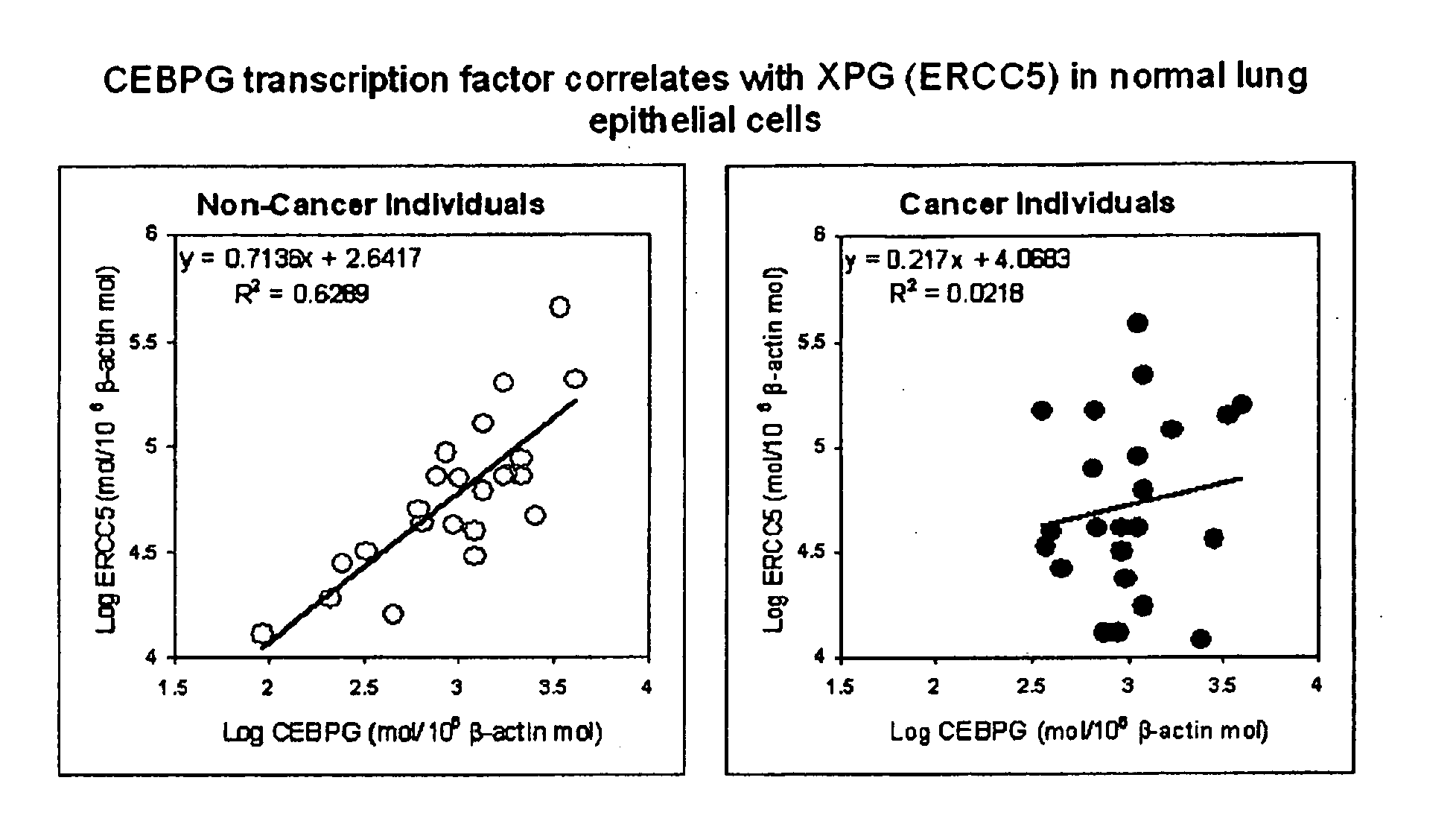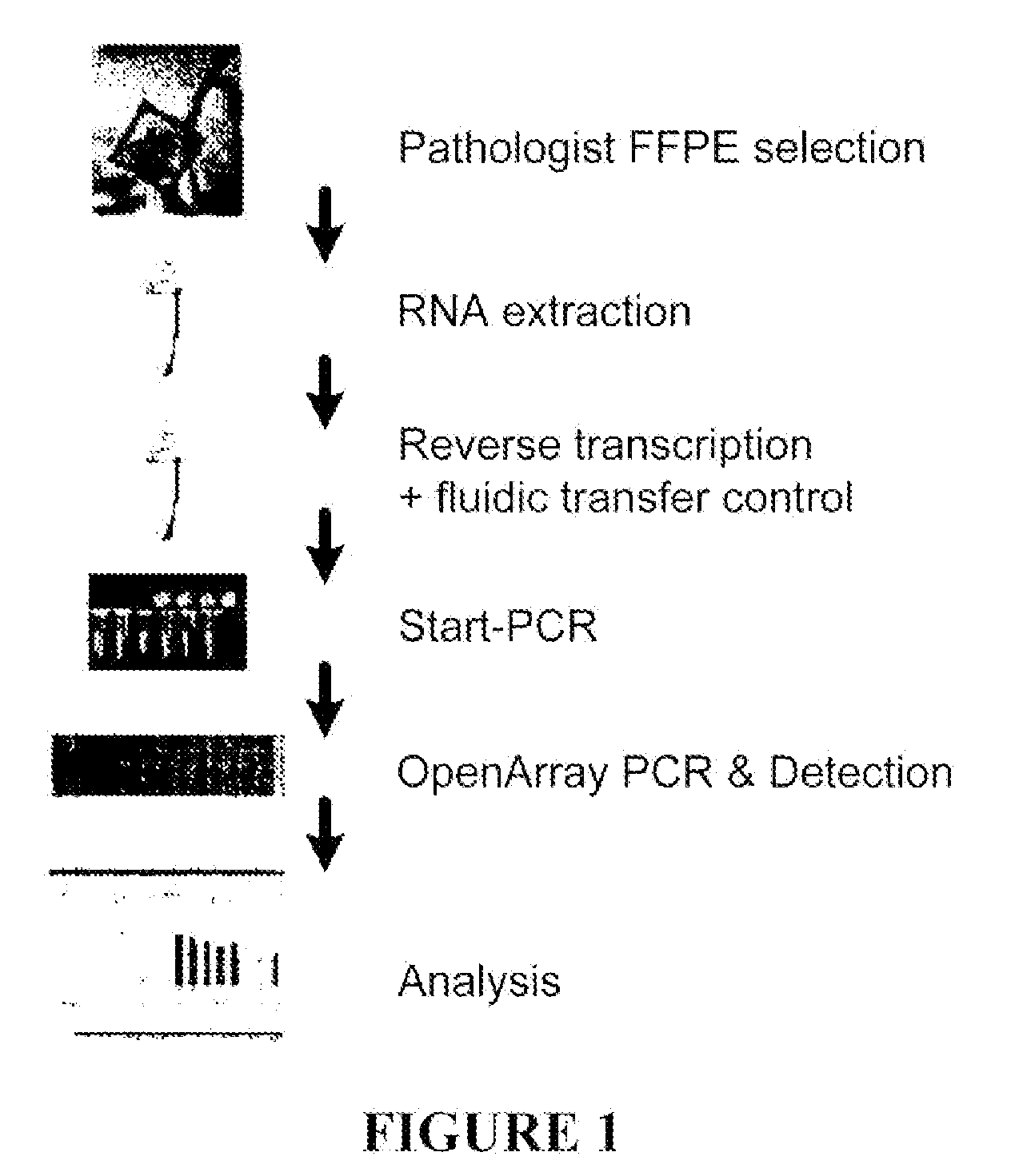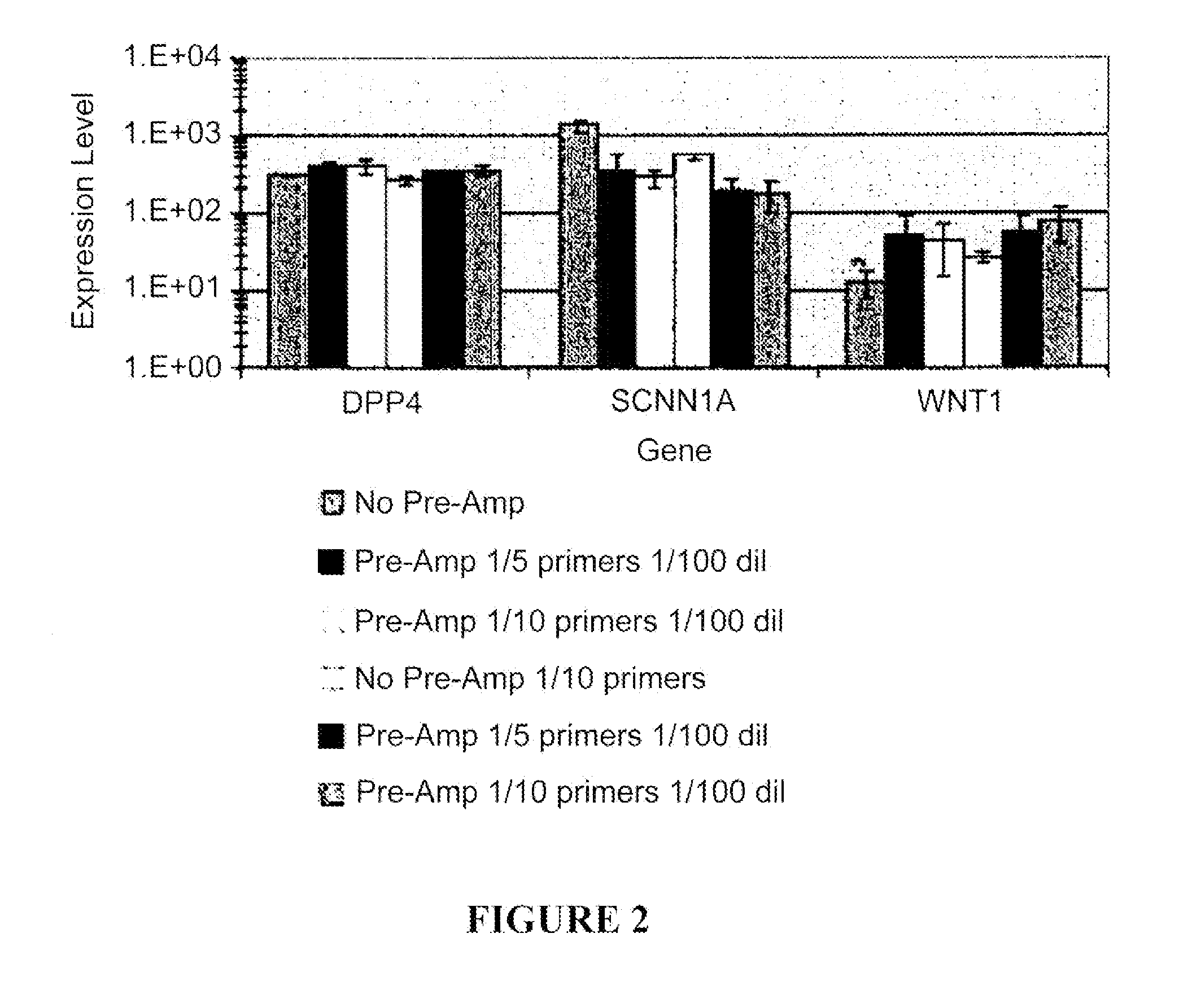Methods and compositions for identifying biomarkers useful in characterizing biological states
a biomarker and state identification technology, applied in the field of methods and compositions for identifying biomarkers useful in characterizing biological states, can solve the problems of low rna requirement, inability to readily deploy test kits with the accuracy, and inability to characterize biological states, etc., and achieve the effect of reducing the number of rna requirements, and improving the accuracy of rna
- Summary
- Abstract
- Description
- Claims
- Application Information
AI Technical Summary
Benefits of technology
Problems solved by technology
Method used
Image
Examples
example 1
Collection of NBCI and BCI Samples
[0069]Normal bronchial epithelial cell (NBEC) and peripheral blood samples can be obtained from patients and a portion of each sample can be used to in the Examples described herein. Individuals can be recruited from among patients who are undergoing diagnostic bronchoscopy. Some indications for bronchoscopy include coughing up of blood, chronic cough, pneumonia resistant to antibiotics, and need to remove a foreign body. Some of these patients may be diagnosed with bronchogenic carcinoma (BCI), while others may have non-neoplastic conditions (NBCI). The age of these patients may range from approximately 20 to approximately 90, with most participants being between the ages of about 60 and about 75. NBEC samples are obtained according to previously described methods. See, e.g, Benhamou S. et al., Carcinogenesis, 8: 1343-1350 (2002).
[0070]From each patient, NBEC samples and 20 ml of peripheral blood can be collected and processed, e.g., as previously ...
example 2
Determination of the Reproducibility and Robustness of the Preamplification StaRT-PCR™ Method.
[0074]To determine the reproducibility and robustness of the previously published preamplification (Pre-Amp) StaRT-PCR™ method, levels of three genes expressed at low level (DP4, SCNN1A, and WNT1) were measured in Stratagene Universal Human Reference RNA (SUHRRNA), under multiple conditions. In each experiment the conditions included the typical no pre-amplification method as a control, or Pre-Amp with a 96-gene primer mixture. Two different primer concentrations (⅕ or 1 / 10 usual concentration) were used in Pre-Amp. The Pre-Amp PCR products were now at a sufficient concentration to allow thousands of individual quantification reactions. In this example, the Pre-Amp PCR products were diluted 10- or 100-fold prior to the second round of PCR. The measured expression levels for experiments that included 1:100 dilution of Pre-Amp products are shown in FIG. 2. Both 10-fold and 100-fold dilutions ...
example 3
Determination of the Utility of a Two Step StaRT-PCR in Allowing the Use of a Small Sample for SNAP Assays.
[0075]In preparation for analysis of a series of transthoracic FNA samples, the SUHRRNA sample was assessed undiluted, 10-fold diluted, or 100-fold diluted by No Pre-Amp or Pre-Amp protocol. The best conditions of 10-fold dilution of primer mixture and 100-fold dilution of Pre-Amp products (1,000-fold overall dilution) were used to repeat analysis of SUHRRNA against fourteen genes. The results shown in FIG. 3 were that an average CV of 15.4% was determined in no Pre-Amp protocol and 14.8% with Pre-Amp protocol. Also, the mean values for five genes that had been previously measured gave mean values that were within 15% of values previously obtained during the optimization experiment. These conditions were then used to assess clinical samples obtained by transthoracic FNA biopsy. These results demonstrate that two step StaRT-PCR™ allows significant decrease of sample consumption ...
PUM
| Property | Measurement | Unit |
|---|---|---|
| Surface resistance | aaaaa | aaaaa |
| Surface resistance | aaaaa | aaaaa |
| Surface resistance | aaaaa | aaaaa |
Abstract
Description
Claims
Application Information
 Login to View More
Login to View More - R&D
- Intellectual Property
- Life Sciences
- Materials
- Tech Scout
- Unparalleled Data Quality
- Higher Quality Content
- 60% Fewer Hallucinations
Browse by: Latest US Patents, China's latest patents, Technical Efficacy Thesaurus, Application Domain, Technology Topic, Popular Technical Reports.
© 2025 PatSnap. All rights reserved.Legal|Privacy policy|Modern Slavery Act Transparency Statement|Sitemap|About US| Contact US: help@patsnap.com



